Are these the best canned sardines in the world?
A visit to the Pinhais cannery in Matosinhos, Porto
I realised after writing this that it sounds a bit like sponsored content because I fell in love a little bit. Disclaimer: I paid for this experience out of my own pocket. It’s just really good!
Anyone who has at least a pinkie finger on the pulse of food trends will know that canned fish is A Thing nowadays. What used to be considered a utilitarian foodstuff has been re-packaged, re-named and CPG’d into a Millennial-Gen-Z-friendly product found in shoppy shops across the world.
But I live in a part of the world where canned fish is still an everyday commodity. The sort of thing that costs a Euro in the supermarket and is found in buxas (packed lunch boxes) across the country.
I recently realised that, despite having lived in Portugal for nearly two years, I don’t know much about Portugal’s canning culture. Fresh fish, yes. I have been known to spend a weekend afternoon at the fish restaurants that line Matosinhos, Porto’s seaside district. But canned? Not so much.
But I’m lucky. In Matosinhos — just 20 minutes away from Porto’s city centre — lies one of the only canneries left in Portugal, packing sardines the traditional way, by hand.
Not knowing this is my bad because the Pinhais cannery has been around for 105 years, established as it was in 1920 by four owners (I was tickled by the fact that two of the them were called Luís because In Portugal you can’t go far without encountering a Luis, a João, an Antonio or a Diogo. I was once introduced to a table of men as João, João, João, Luis, João, and João).
Canning used to be big business. Pinhais used to own 48 canneries across the country. Now, it’s just four. Canned fish fell out of favour for a long time, but there has been a renewed interest thanks to the likes of artisanal CPGs like Fishwife.
There is life in the old cannery industry yet.
I toured the factory this week, and the thing that stood out to me most was how intent Pinhais is at preserving quality and tradition.
I hear this bandied about a lot. I’ve toured wineries that tell me they’re all about making wine as Grandpa made it — just don’t ask any questions about additives or pesticides.
But at Pinhais, they are true to their word. As my guide Mafalda put it, unless the government says they have to do something by machine, they do it by hand. In fact, everything about the production buts up against our modern-day preoccupation with squeezing every cent out of business. The very opposite of LEAN.
I was expecting Pinhais to say they supply supermarkets and white labels, but no, all of their production is limited to just two brands. The Pinhais brand which you can only buy at the cannery and a few artisanal food shops in Portugal. And the Nuri brand, which is largely for export. None of it goes to supermarkets, and none of it is repackaged for CPGs.
Work at the factory starts early morning, as two women head to buy fish at the nearby Leixões docks. The weighing is not done by kilos but by baskets.
Sardines are at their best May to November. These go into the local Pinhais brand (the cheaper Nuri brand contains sardines from both Leixões and other parts of Portugal all year round).
The fish return to the factory where they are brined in a 25% sea salt solution before being cut and gutted on original marble tables that look like they weigh more than my car. Once gutted, they’re steam-cooked outside the can. This, I was told, is an important detail. Other canneries will steam once the fish are inside the can because cooking shrinks the fish, meaning they can get away with putting fewer fish in each can.
Once cooked, the fish go onto the factory floor where 100 women — and 12 men — will pack them into tin cans (not aluminium, the cheaper but less sturdy option). Each can will contain aromatics, all cut by hand by the factory workers, including malagueta (chilli), laurel (bay leaf), carrot and black pepper.
Some are packed in tomato sauce, the recipe of which only two people in the company know.
The fish go onto a production line where workers fill each can with aromatics and three to five fish. Cans are topped up with Portuguese olive oil, sealed and hand-wrapped by a dedicated team.
The factory packages 25,000 cans a day but they are not under any strict quotas, that’s just the natural number these skilled women can work to.
The visit got me thinking about this idea of “skilled” versus “unskilled” labour. Skilled often refers to, for want of a better phrase, white collar work, whist unskilled is factory work, hospitality, retail and all other manner of jobs that are, frankly, exceptionally skilled.
These skilled / unskilled definitions are a bugbear of mine because I heard it all the time during my wine store and bar days. That I — and my staff — were unskilled because we worked in retail and hospitality. Anyone who has spent a shift working a busy bar or shop floor — or indeed in a cannery — will know how untrue that is.
But I digress. Back to the sardines.
So what are they like? It will come no surprise that they are bloody lovely. Firm, not overtly fishy in taste, and perfect spread onto bread. Our guide told us the spine of a sardine — which are edible once canned — has the same calcium level as a glass of milk. Considering how many more sardines I plan to introduce into my weekly diet, my bones are about to become really strong.
More than the taste, this is the sort of place I love to buy from. Something I’ve found about living abroad is that after a while, one day turns into the next. You get into routines. You work, you watch TV, you do your chores. That whole “holy shit, I live in Portugal” thing wanes after a while as the day-to-day takes over.
If you don’t leave the apartment for a few days — as is easy when you work from home — you can forget where the hell in the world you are.
Experiences like this remind me that we’re not in Kansas anymore, Toto. Or indeed, we’re not in the UK anymore, Charlie.
This is Portugal. The old, traditional side of Portugal that has barely changed in 105 years. This is where I live and honestly, food culture like that of Pinhais cannery reminds why I chose to live here in the first place.

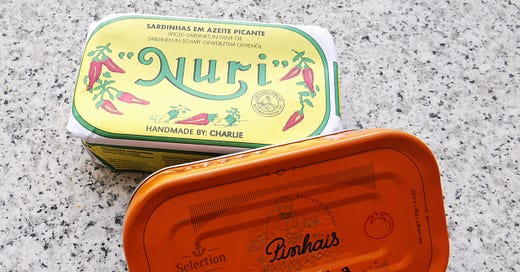



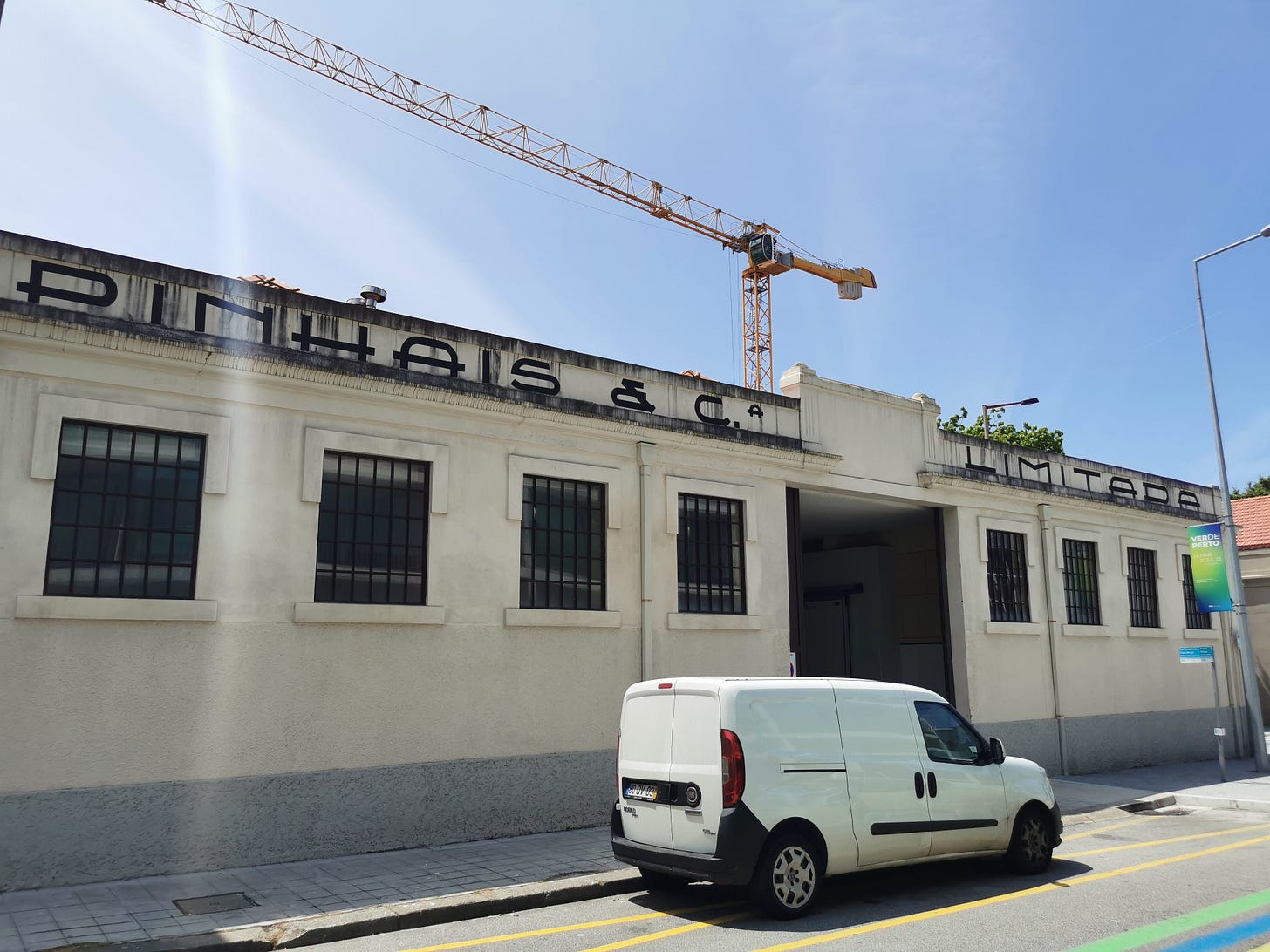


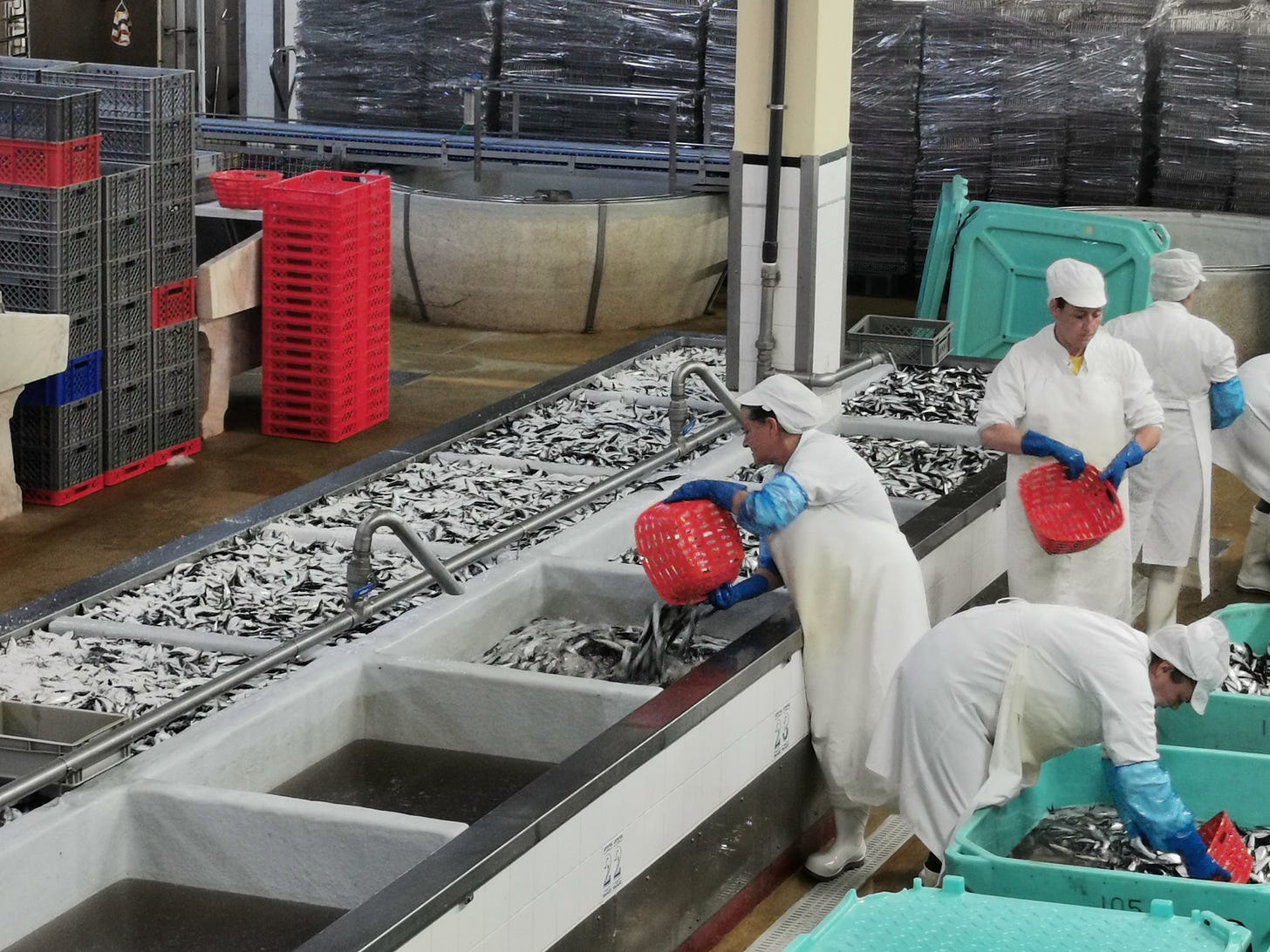
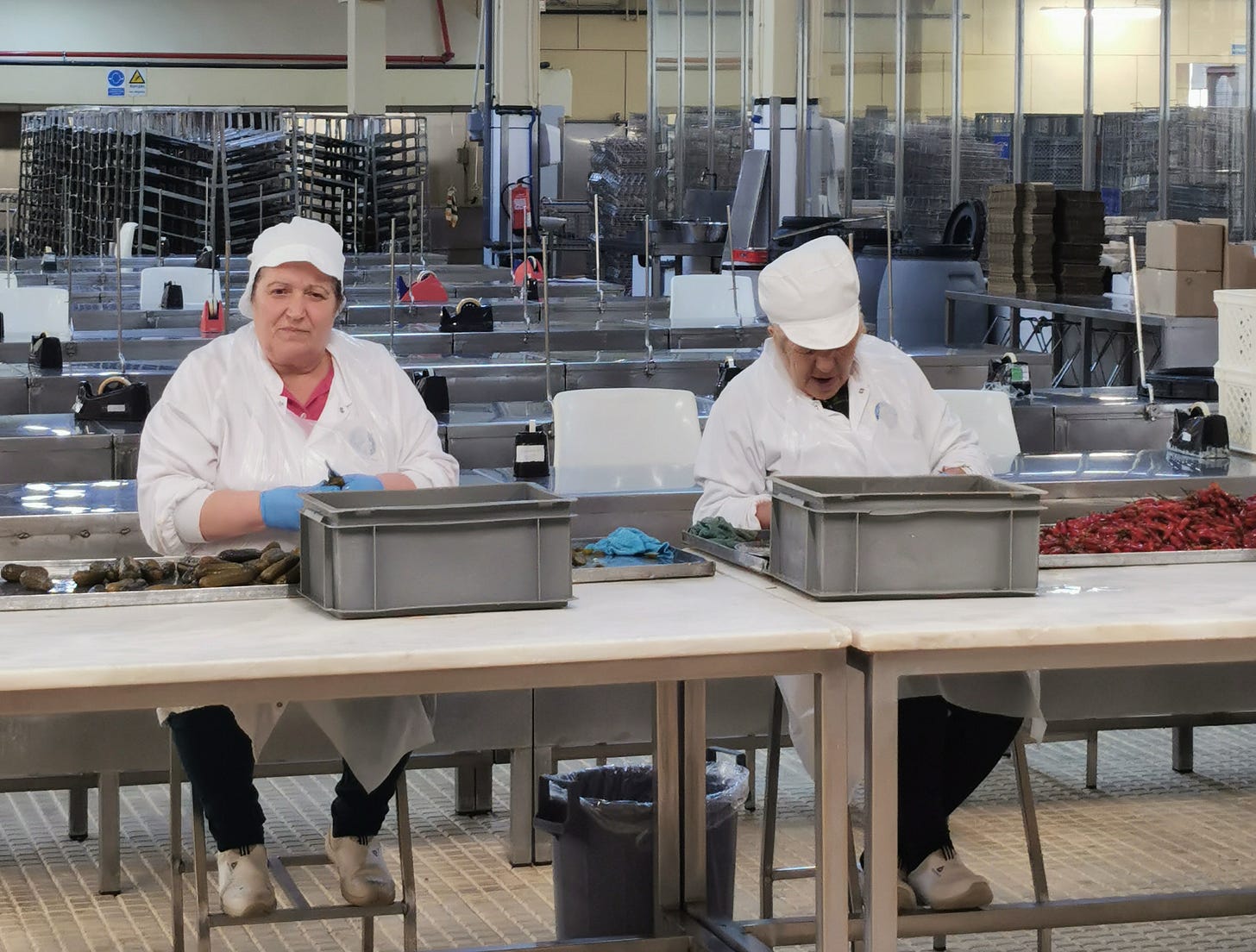
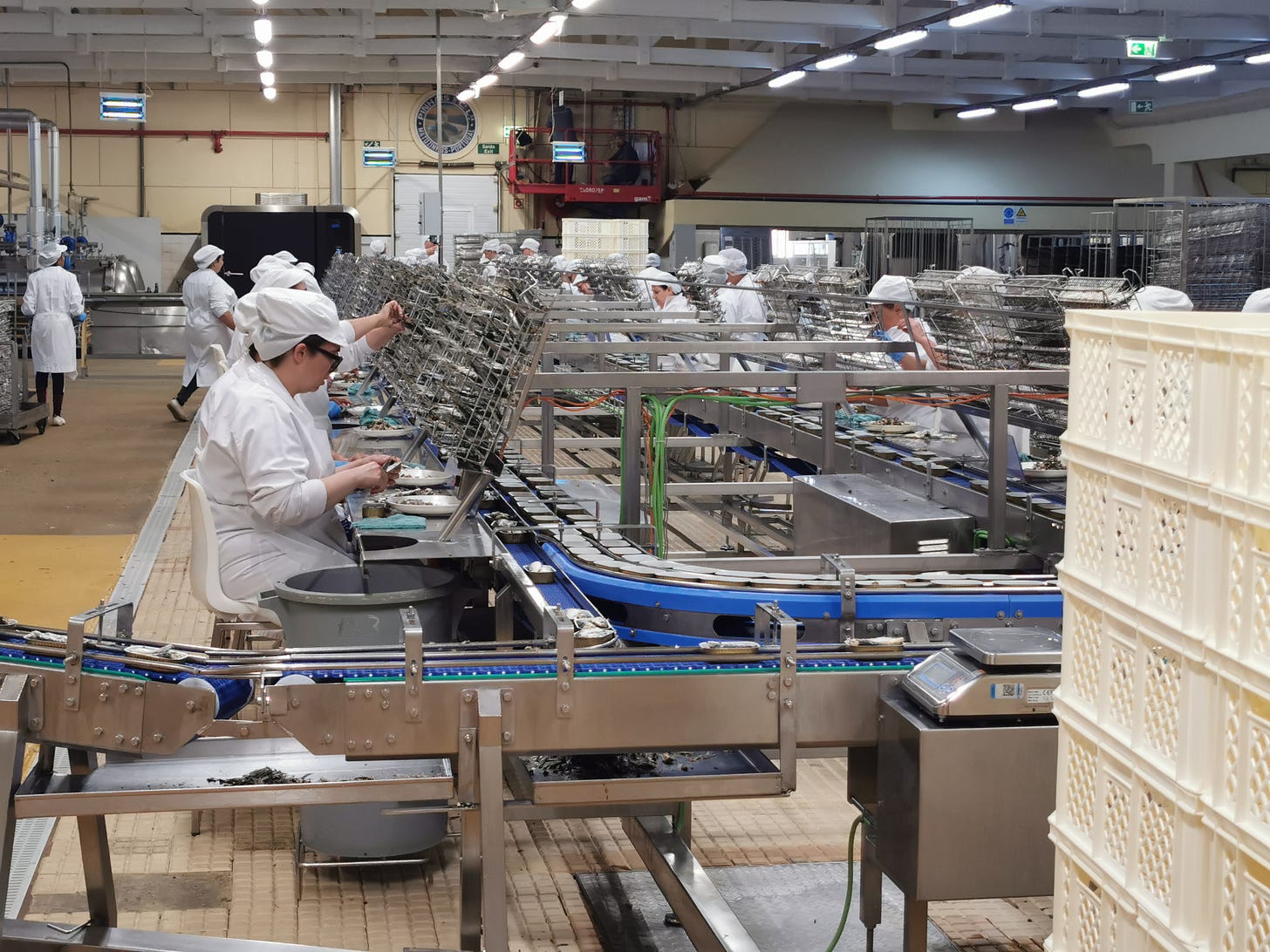
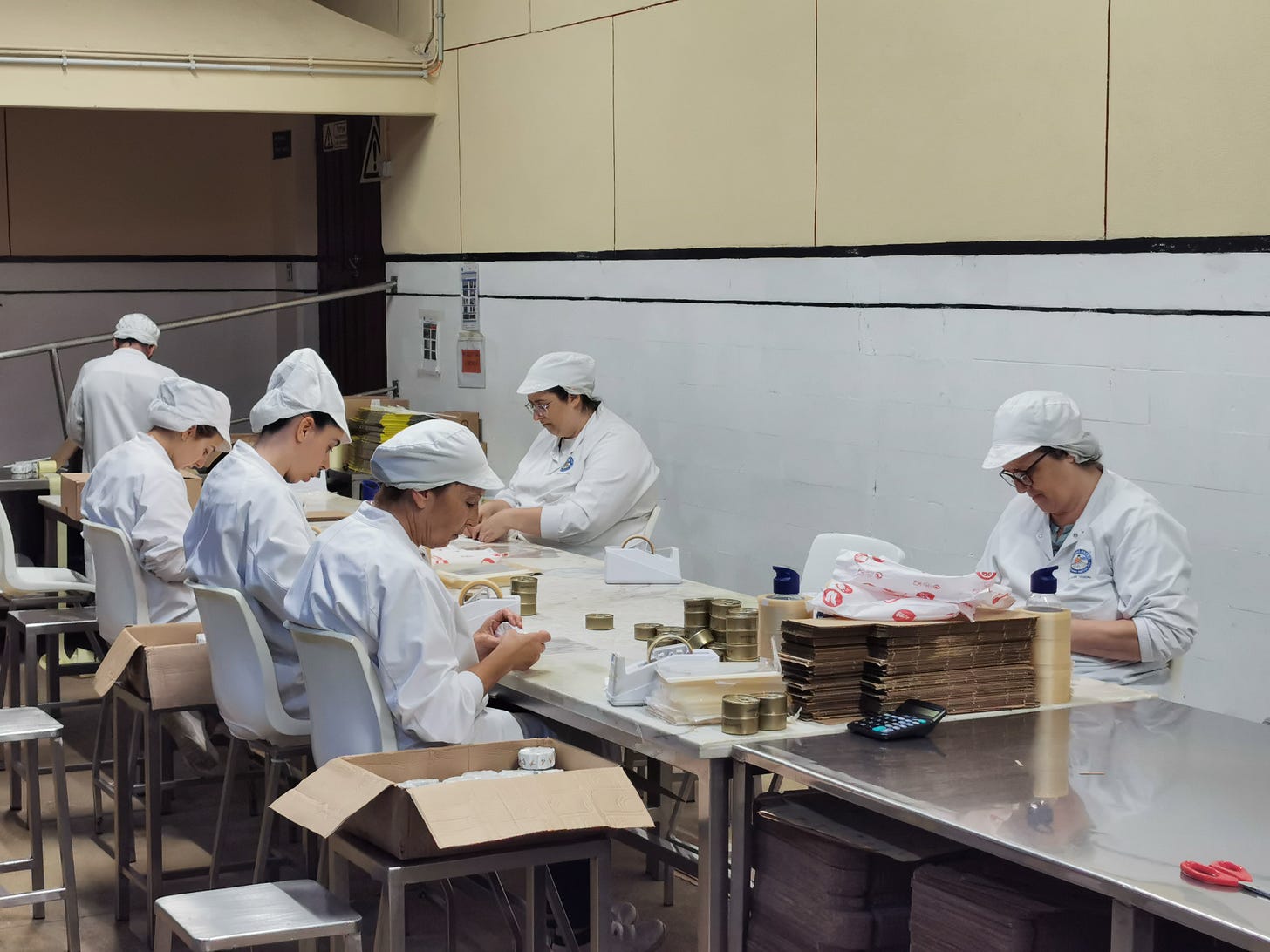


Glad you enjoyed the experience! I worked in the edible fish industry for several years—quite fascinating stuff. Yes everybody boils in the can, didn’t know there was a firm who didn’t. Sounds like a good outing for our next trip to Portugal.
So underrated and overlooked is the noble canned sardine. I usually buy armfuls of the stuff when leaving Portugal and heading back to Dubai. So much so, that I have a friend who puts in an order with me so that I can bring some back for her.